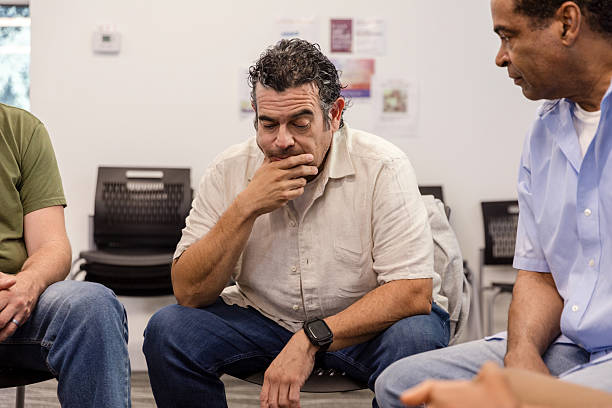Introduction: Taking Control of Your Diabetes Journey
Managing diabetes isn’t just about taking medication—it’s about creating daily habits that support your overall health and well-being. This includes making smart food choices, staying physically active, monitoring your blood sugar, and managing stress. Whether you are newly diagnosed or have been living with diabetes for years, small, consistent actions can have a big impact on your long-term health.
These daily strategies not only help keep your blood sugar steady, but they also boost your energy, improve mood, and lower the risk of diabetes-related complications such as heart disease, nerve damage, or vision problems. By taking simple, practical steps—like planning balanced meals, exercising regularly, staying hydrated, and getting quality sleep—you can gain more control over your condition and enjoy a healthier, more active lifestyle. Over time, these habits become second nature, helping you feel your best every day.
1. Follow the Diabetes Plate Method for Balanced Meals
The Diabetes Plate Method is a simple, visual way to portion your meals for better blood sugar control. Instead of counting every calorie or carbohydrate, you can rely on your plate as a guide. Using a 9-inch plate makes it easy to balance your meals without complicated calculations, making it practical for everyday life at home, work, or dining out. This method also teaches portion control, which is key for weight management and long-term diabetes care.
How to set up your plate:
- Half with non-starchy vegetables – Examples: broccoli, spinach, cauliflower, peppers, zucchini, or leafy greens. These are packed with fiber, vitamins, and minerals but are low in calories and carbs, which makes them ideal for filling you up without spiking blood sugar.
- One-quarter with lean protein – Examples: chicken, fish, turkey, tofu, eggs, or beans. Protein not only keeps you full longer, but it also helps your body build and maintain muscle, which supports healthy metabolism and blood sugar balance.
- One-quarter with healthy carbs – Examples: whole grains like quinoa, barley, brown rice, or starchy vegetables like corn and sweet potatoes. These foods digest more slowly than refined carbs, which helps prevent sudden spikes and crashes in blood sugar.
The Plate Method makes meal planning stress-free, helps avoid overeating, and supports consistent blood sugar levels throughout the day. It also allows flexibility—you can mix and match foods while still staying on track with your diabetes goals. (diabetes.org)

2. Choose High-Fiber, Low-Glycemic Foods
Fiber-rich foods slow sugar absorption, reduce blood sugar spikes, and help you feel full for longer periods of time. This is especially helpful for people with diabetes because it prevents sharp rises and drops in glucose levels that can leave you tired or hungry. Low-glycemic foods are also important since they cause slower, steadier increases in blood sugar, giving your body more time to use insulin effectively. Together, these foods make it easier to maintain balance throughout the day.
Best options include:
- Whole grains: oats, quinoa, barley, brown rice. These grains are less processed, provide steady energy, and are packed with vitamins and minerals.
- Legumes: lentils, chickpeas, black beans. They are high in protein and fiber, making them a great substitute for meat or a filling side dish.
- Fruits and vegetables: apples, carrots, berries, leafy greens. These are rich in antioxidants, fiber, and essential nutrients while being naturally low in fat.
Adding more fiber to your diet not only supports stable blood sugar but also improves digestion, lowers cholesterol, and promotes heart health. It may even help with weight management by keeping you full and reducing cravings. Making small swaps—like choosing brown rice instead of white rice or snacking on an apple instead of chips—can make a big difference over time. (verywellhealth.com)
3. Incorporate Magnesium-Rich Foods
Magnesium helps regulate blood sugar and supports insulin function, which makes it an important nutrient for people with diabetes. Low magnesium levels can make it harder for the body to use insulin effectively, leading to higher blood sugar. Studies show that many people with type 2 diabetes have lower magnesium levels, so it’s important to include magnesium-rich foods regularly in your diet. Getting enough magnesium can also help reduce the risk of complications such as high blood pressure and heart disease, which are more common in people with diabetes.
Good sources:
- Leafy greens: spinach, kale, and Swiss chard are rich in magnesium as well as fiber, which helps with blood sugar control.
- Nuts and seeds: almonds, pumpkin seeds, and sunflower seeds provide magnesium along with healthy fats that support heart health.
- Whole grains: barley, brown rice, and oats offer both magnesium and slow-digesting carbs that prevent spikes in blood sugar.
- Legumes: lentils, black beans, and kidney beans are great plant-based sources of magnesium, protein, and fiber.
Eating these foods regularly can help improve blood sugar control, support muscle and nerve function, and promote better heart health. Even small additions, like sprinkling seeds on salads or swapping white rice for brown rice, can boost your daily magnesium intake in a simple, sustainable way. (timesofindia.indiatimes.com)
4. Stay Active with Regular Exercise
Exercise improves insulin sensitivity, helps control blood sugar, and supports healthy weight management. When you move your body, your muscles use more glucose, which lowers blood sugar naturally. Regular activity also improves circulation, boosts mood, and strengthens your heart. The good news is that you don’t have to spend hours at the gym—short, consistent sessions can still make a big difference for people with diabetes.
Recommended activities:
- Walking or brisk walking for 30 minutes daily – A simple, low-impact exercise that’s easy to fit into your routine and gentle on the joints.
- Cycling, swimming, or water aerobics – These are great options for people who prefer variety or need a low-impact workout that’s easier on the knees and back.
- Strength training with light weights or resistance bands – Building muscle helps your body use insulin more effectively and keeps your metabolism strong.
Consistency matters more than intensity. Even 10–15 minutes of activity, such as a walk after meals or stretching before bed, can improve blood sugar control. The key is to find activities you enjoy, so exercise feels like a part of your lifestyle, not a chore. Over time, these small steps add up to big health benefits. (hopkinsmedicine.org)
5. Monitor Your Blood Sugar Regularly
Tracking your blood sugar helps you understand how your body responds to food, exercise, stress, and medication. Every person’s body reacts differently, so regular checks give you a clearer picture of what works best for you. Monitoring can also help you notice patterns—such as higher numbers after certain meals or lower numbers after exercise—that you can use to make smarter daily choices.
Tips for effective monitoring:
- Test at recommended times – such as before meals, two hours after meals, before bedtime, or as directed by your doctor. These readings help you see how daily habits affect your blood sugar.
- Keep a log of readings to spot trends – You can use a notebook, smartphone app, or glucose meter with memory to track changes over time. This makes it easier to connect lifestyle choices with results.
- Share data with your healthcare provider to adjust your plan – Your doctor or diabetes educator can use your records to fine-tune your medication, diet, or activity plan for better results.
Regular monitoring empowers you to take control of your diabetes. It helps prevent dangerous highs (hyperglycemia) or lows (hypoglycemia) and gives you confidence in your daily routine. Over time, this habit becomes one of the most effective tools for managing diabetes. (niddk.nih.gov)

6. Manage Stress Effectively
Chronic stress increases hormones like cortisol and adrenaline, which can raise blood sugar levels and make diabetes harder to manage. Stress can also lead to unhealthy habits, such as overeating, skipping exercise, or not sleeping well—all of which can affect blood sugar control. That’s why managing stress is essential for daily diabetes care. Learning how to relax your body and mind helps you stay balanced and improves your ability to stick with healthy routines.
Stress-reduction strategies:
- Deep breathing exercises or meditation – Just a few minutes of focused breathing can lower stress, calm your nervous system, and help bring blood sugar back to normal.
- Yoga or stretching routines – Gentle movement not only reduces stress but also improves flexibility, circulation, and relaxation.
- Spending time on hobbies or social activities – Enjoying music, reading, gardening, or connecting with friends gives your mind a healthy break and lowers stress levels.
Finding a stress-reduction routine that works for you can improve blood sugar, sleep quality, mood, and overall well-being. Even small steps, like taking a 10-minute walk outdoors or listening to calming music, can make a noticeable difference over time. (abbott.com)
7. Stay Hydrated with Water and Herbal Teas
Water helps your kidneys flush out excess sugar through urine, which can prevent dangerous spikes in blood glucose. Staying hydrated also helps your body process nutrients better, keeps your joints and muscles working well, and supports overall energy. For people with diabetes, drinking enough water is one of the simplest daily habits that can make a big impact. Dehydration, on the other hand, can cause higher blood sugar and even increase the risk of complications.
Tips:
- Aim for at least 8 glasses a day – Spread your intake throughout the day to stay consistently hydrated.
- Choose herbal teas like chamomile or peppermint – These are naturally calorie-free and help cut back on sugary drinks.
- Avoid drinks with added sugars – Sodas, fruit juices, and energy drinks can cause rapid blood sugar spikes.
- Carry a water bottle – Having water nearby makes it easier to meet your daily hydration goals.
Proper hydration supports digestion, energy levels, and stable blood sugar throughout the day. Making water your go-to drink is a small change with lasting benefits. (mayoclinic.org)
8. Get Quality Sleep
Poor sleep disrupts hormones like insulin and cortisol, which play a key role in blood sugar control. When you don’t get enough rest, your body becomes less sensitive to insulin, making it harder to keep glucose levels stable. Lack of sleep can also increase cravings for sugary or high-carb foods, raising the risk of weight gain and diabetes complications. Over time, poor sleep may lead to higher stress, lower energy, and weaker immunity, all of which can impact daily diabetes management.
Sleep tips:
- Aim for 7–9 hours nightly – Quality rest supports healthy blood sugar and overall recovery.
- Keep a consistent bedtime routine – Going to bed and waking up at the same time helps regulate your body’s clock.
- Make your bedroom dark, quiet, and cool – A calm environment makes it easier to fall and stay asleep.
- Limit screen time before bed – Blue light from phones or TVs can disrupt melatonin, the sleep hormone.
Good sleep not only improves insulin sensitivity but also boosts mental clarity, mood, and overall health, making it a vital part of daily diabetes care. (publichealth.santaclaracounty.gov)
9. Take Medications as Prescribed
Medication adherence is crucial for managing diabetes. Skipping doses, doubling up, or changing your medication without guidance can cause dangerous blood sugar swings. Poor adherence may lead to hyperglycemia, hypoglycemia, or long-term complications such as heart or kidney problems. Staying consistent with your medication plan ensures that your treatment works as intended and keeps your blood sugar stable throughout the day.
Tips:
- Use pill organizers or reminders – Weekly pill boxes, alarms, or phone apps can help you take your medications on time.
- Discuss side effects with your provider – Don’t stop taking medicine on your own; your doctor can suggest safer alternatives.
- Never adjust doses on your own – Changing amounts without medical advice can make diabetes harder to control.
- Refill prescriptions early – Running out of medicine can disrupt your blood sugar routine.
Following your prescribed medication plan keeps your blood sugar within target ranges and lowers the risk of serious complications. (abbott.com)

10. Build a Support System
Living with diabetes can feel overwhelming at times, but having the right support system makes it easier to manage. You don’t have to face the challenges alone. Emotional and practical support can help reduce stress, improve daily habits, and make sticking to your care plan more manageable. Surrounding yourself with people who understand your journey can also boost motivation and provide comfort on tough days.
Ways to find support:
- Join local or online diabetes support groups – Talking with others who share the same experiences can provide new tips, encouragement, and a sense of belonging.
- Stay connected with healthcare providers – Regular check-ins with doctors, diabetes educators, or dietitians ensure you stay on track and get expert guidance.
- Share experiences and tips with family or friends – Involving loved ones in your care can make meal planning, exercise, and daily routines easier to follow.
- Use apps or online communities – Digital platforms can help track progress and connect with supportive peers anytime.
Having encouragement and accountability not only improves adherence but also lifts your mood and strengthens your overall health. (cdc.gov)
Conclusion: Empower Yourself for Better Health
Daily diabetes management is about making small, consistent choices that protect your health and keep your blood sugar in balance. Each decision you make—whether it’s what you eat, how active you are, or how well you sleep—can affect your overall well-being. By building healthy habits into your routine, you can create a strong foundation for long-term success.
Simple actions like following a balanced meal plan, staying active, drinking enough water, and managing stress all work together to improve your energy and reduce the risk of serious complications. Over time, these steady efforts help you feel more in control and allow you to live a healthier, more fulfilling life.


